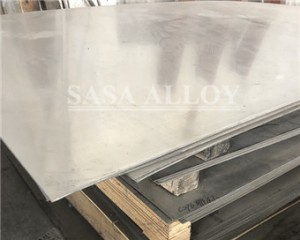-
In industries such as oil & gas, marine engineering, and aerospace, selecting the right alloy for high-stress, corrosive environments is critical. Two of the most trusted materials in this field are K500 alloy bars and Inconel 718 bars. Both are nickel-based alloys, ...Read more »
-
SASA ALLOY, a global leader in specialty alloys, has successfully delivered high-performance K500 nickel-copper alloy bars for a deepwater subsea valve project located in the Gulf of Mexico. This high-profile project, commissioned by a major offshore engineering contract...Read more »
-

INCONEL 718 is a nickel-based superalloy engineered for exceptional strength and corrosion resistance. Its composition features a high nickel content, along with notable additions of chromium and iron, and smaller amounts of elements like molyb...Read more »
-

Incoloy A-286 (UNS S66286) is an iron-nickel-chromium-based austenitic superalloy engineered for high-temperature service. It combines excellent mechanical strength with good corrosion and oxidation resistance, making it ideal for structural co...Read more »
-

Inconel X-750 is a precipitation-hardenable nickel-chromium alloy renowned for its exceptional mechanical strength and oxidation resistance at high temperatures. Commonly used in aerospace, nuclear, and industrial gas turbine applications, this...Read more »
-

Hastelloy C-276 (UNS N10276) is a nickel-molybdenum-chromium superalloy known for its exceptional resistance to strong oxidizing and reducing environments. It is widely used in chemical processing, environmental protection, marine engineering, ...Read more »
-

What is Inconel ? Inconel is a trademarked name for a family of corrosion-resistant metal alloys primarily composed of nickel, along with chromium, iron, and other elements depending on the specific grade. These alloys are known for ...Read more »
-

An alloy is formed by combining a metal with one or more additional elements, which can be either metals or nonmetals. For the mixture to qualify as an alloy, the elements must be integrated as a solid solution, a compound, or a physical mixtur...Read more »
-

Inconel X750 (also known as UNS N07750) is a nickel-chromium alloy blended with aluminum and titanium to make it precipitation hardenable. It is resistant to corrosion and oxidation and has good mechanical properties at high temperatures up to 700°C (1290°F), including high tensile and creep-rupt...Read more »
-

Base alloy is a nickel-based alloy. As the name implies, the chemical composition of nickel accounts for a large proportion and is the main component. Therefore, nickel-based alloys have high strength and are suitable for many high-temperature alloy industries. So, what are the advantages of nick...Read more »
-

Inconel X-750 Bars boast remarkable stress-rupture effectiveness while exhibiting lower resistance to creeping. Engineered to thrive in high-stress environments requiring precise temperature control and heat treatment, these bars demonstrate exceptional strength, particularly at temperatures reac...Read more »
-

The Difference Between Hastelloy B2 & Hastelloy B3 Hastelloy B2 and Hastelloy B3 are both nickel-based alloys known for their excellent resistance to corrosion, particularly in aggressive chemical environments. While they share similarities, there are some key differences between these two al...Read more »









